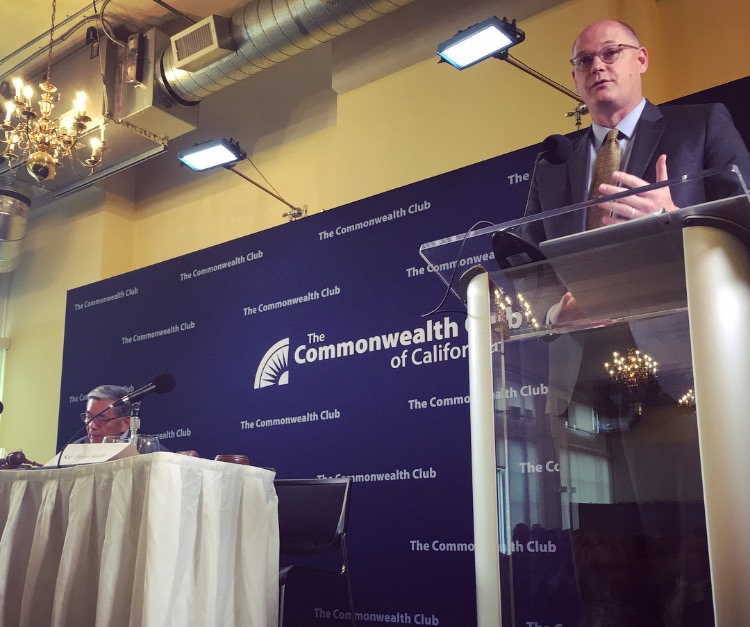 SACRAMENTO – Caltrans has officially launched California’s new pay-by-mile Road Charge Pilot Program, where selected volunteer participants will help the state gain insight into an innovative way to finance California’s transportation infrastructure. This pilot will be an opportunity to study road charge alternatives to the gas tax and will provide the Legislature with the data needed to better determine whether a road charge funding concept is viable for California. No actual money will be exchanged during the pilot.
SACRAMENTO – Caltrans has officially launched California’s new pay-by-mile Road Charge Pilot Program, where selected volunteer participants will help the state gain insight into an innovative way to finance California’s transportation infrastructure. This pilot will be an opportunity to study road charge alternatives to the gas tax and will provide the Legislature with the data needed to better determine whether a road charge funding concept is viable for California. No actual money will be exchanged during the pilot.
“We’re proud that thousands of Californians have signed up to volunteer for the California Road Charge Pilot Program,” said Caltrans Director Malcolm Dougherty. “The opportunity to provide valuable input and evaluate the viability of a mileage based user fee system demonstrates the commitment that Californians have to our roads and keeping them well maintained.”
Volunteers that have been accepted to participate in the pilot are made up of drivers from all parts of California with various socioeconomic backgrounds. In addition, some out-of-state volunteers will be featured in the pilot in order to help California determine how a road charge tax could impact visiting drivers.
Pilot participants will not actually pay a road charge while participating in the pilot. Instead, they will make simulated payments based on how far they drive. The pilot offers several options for participants to report their mileage, including six different low-to-high tech methods:

The pilot is set to run for nine months from July 2016 to March 2017. When concluded, the California State Transportation Agency (CalSTA) will report the pilot’s findings to the Road Charge Technical Advisory Committee, the California Transportation Commission and the appropriate policy and fiscal committees of the Legislature. The Legislature will make the ultimate decision on whether to enact a full-scale permanent road charge program in California.
Even if the Legislature decides not to implement a road charge, California will still be in need of a more sustainable roadway funding mechanism than the current fuel excise tax. The fuel excise tax only funds approximately $2.3 billion of work to maintain the 50,000 lane-miles and nearly 13,000 state-owned bridges on the state highway system. This leaves nearly $5.7 billion in unfunded repairs each year.
Road charging is based on the same principle that the current gas tax was created upon: the amount drivers pay to maintain roads should correspond to the number of miles they drive. However, the gas tax no longer serves this purpose now that cars drive farther and need less fuel.
California is not the only state researching alternative road funding options. Several other states—including Washington, Colorado, Utah and others—are also exploring the road charge concept of pay-by-the-mile. Last July, the state of Oregon launched phase one of its OReGO program, where volunteers are paying a road charge of 1.5 cents per mile driven instead of the fuel tax.
There is still time to volunteer for the California Road Charge Pilot! To sign-up and learn more about California’s program, please visit http://californiaroadchargepilot.com/sign-up
# # #
The California Road Charge Technical Advisory Committee was created by the California Transportation Commission on January 21, 2015, to study road charging pursuant to Senate Bill 1077 (2014). The volunteer committee represents a variety of interests and stakeholders from across the state including highway user groups, data security experts, privacy rights organizations, social equity groups, regional transportation agencies, business interests, national research and policymaking bodies, members of the Legislature and representatives from the telecommunications industry.



